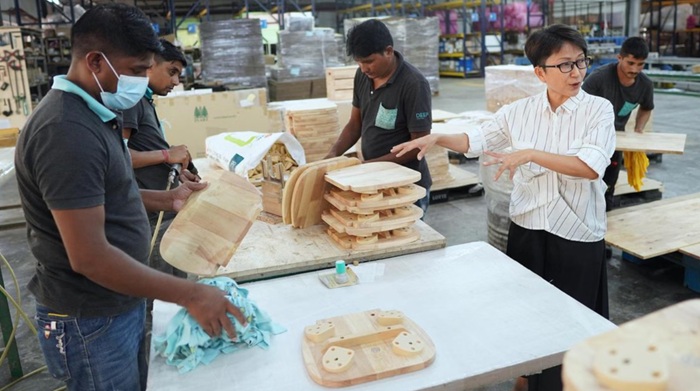
Factory workers in Muar, known for its abundant high-quality rubberwood sourced from end-of-life-cycle rubber plantations, are working speedily to polish ready-to-assemble furniture pieces and arranging them into flat-pack boxes.
The hive of activity in the coastal town in north-western Johor, Malaysia’s biggest furniture manufacturing hub, belies the confluence of pain points that are contributing to an undercurrent of foreboding and gloom.
There is a well-founded sense of urgency: While some orders to the United States have already been halted, others are being expedited to ensure shipments are made before the full force of US President Donald Trump’s “reciprocal tariffs” take effect when the 90-day pause ends in July.
Even as negotiations on tariff adjustments continue apace, the industry fears a blunting of demand from a market that accounted for half of Malaysia’s RM9.89 billion (S$2.99 billion) wooden furniture exports in 2024.
Yet Malaysia’s furniture producers, such as Ms Candice Lim, founder of Natural Signature, are also being forced to simultaneously contend with increasingly stiff competition from China. That challenge began in earnest back in 2019 when furniture was among the categories of Chinese goods hit with tariffs during Mr Trump’s first administration, resulting in Chinese manufacturers who found themselves priced out of the US searching for new buyers, including in Malaysia.
“Faced with the first wave of tariffs, Chinese competitors slashed costs across raw materials, rent, and salaries to stay afloat,” said Ms Lim, who employs more than 100 mostly migrant workers at its Muar operations. “Their ‘pile it high, sell it cheap’ strategy enabled them to sell directly to consumers through Taobao,” the 56-year-old told The Straits Times, referring to the popular e-commerce platform owned by Chinese tech giant Alibaba.
An influx of Chinese output, upending industries and local economies like Muar’s, is a phenomenon playing out across much of South-east Asia. It will likely be exacerbated if the Trump administration persists with its hefty tariffs regime on Beijing, even as Asean economies grapple with the fallout from their own respective reciprocal tariffs levied by Washington.
In Indonesia, South-east Asia’s largest economy, industry associations and trade unions say about 250,000 workers in the garment and textile sectors were laid off between 2022 and 2024 – with another half a million at risk in 2025. Textiles giant Sritex, which employs about 50,000 workers and sews clothes for global brands like Uniqlo, Zara and H&M, entered bankruptcy proceedings earlier in 2025, blaming “an oversupply of textiles in China” for its financial demise.
In Thailand, about two-thirds of the ceramics and handicraft factories in Thailand’s northern Lampang province have shuttered in the past five years, leaving only 89, according to local industry associations. An influx of Chinese electric vehicles (EVs) has hit incumbent Japanese automakers hard, causing production cuts and thousands of job losses among the local Thai auto parts manufacturers that service them.
The common denominator is China, where a post-pandemic economic malaise and real estate slump has resulted in dispirited consumers and weak domestic demand.
Among Beijing’s vaunted solutions has been to double down on investment in manufacturing and exports, propelling China’s total trade surplus to a record high of just under US$1 trillion (S$1.3 trillion) in 2024, driving nearly one-third of its gross domestic product growth for the year.
The Biden administration, however, had kept on tariffs that Mr Trump imposed during his first term, and with much of the West throwing up barriers to keep out big-ticket Chinese items like EVs, steel and solar panels, much of the excess production capacity has been spilling into South-east Asia, even before the Trump administration’s newest trade war salvos.
But it is lower-value goods like garments, shoes, manufacturing components, as well as the myriad packages sent by China’s e-commerce giants such as Temu and Taobao direct to consumers, that are wreaking particular havoc with local industries.
With trade going in the opposite direction not keeping pace, China’s trade surplus with Asean member countries has more than doubled from US$90 billion in 2021 to US$190 billion in 2024. The 10-nation regional grouping, to which some Chinese factories have been relocating to avoid tariffs, surpassed the US and the European Union to become China’s largest export market in 2023. Chinese exports to Asean surged 21 per cent year on year to US$60.4 billion for the month of April.
